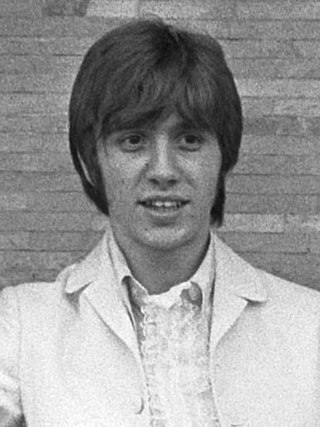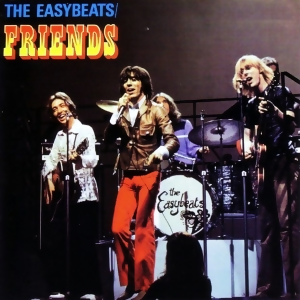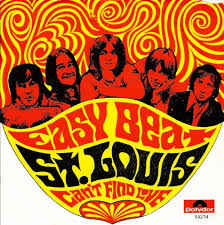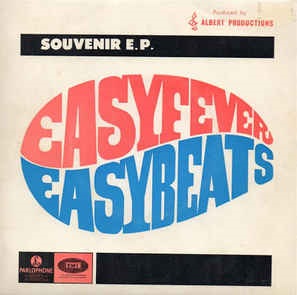
The Easybeats were an Australian rock band which formed in Sydney in late 1964. They are best known for their 1966 hit single "Friday on My Mind", which is regarded as the first Australian rock song to achieve international success; Rolling Stone described it as "the first international victory for Oz rock". One of the most popular and successful bands in the country, they were one of the few Australian bands of their time to foreground their original material; their first album Easy (1965) was one of the earliest Australian rock albums featuring all original songs.

Johannes Hendrikus Jacob van den Berg, better known as his stage name Harry Vanda, is an Australian musician, songwriter and record producer. He is best known as lead guitarist of the 1960s Australian rock band the Easybeats who with fellow member George Young formed the 1970s and 1980s songwriting and record production duo Vanda & Young.

George Redburn Young was an Australian musician, songwriter and record producer. He was a founding member of the bands The Easybeats and Flash and the Pan, and was one-half of the songwriting and production duo Vanda & Young with his long-time musical collaborator Harry Vanda, with whom he co-wrote the international hits "Friday on My Mind" and "Love Is in the Air", the latter recorded by John Paul Young.

Stephen Carlton Wright was an Australian singer, songwriter, and musician. Called Australia's first international pop star, he is best known for being the lead singer of the Easybeats, who are widely regarded as the greatest Australian pop band of the 1960s.
Flash and the Pan were an Australian new wave musical group. Also described as "a kind of post-disco, pre-house percussive dance music". It was formed in 1976 by Harry Vanda and George Young, both former members of the Easybeats, who formed a production and songwriting team known as Vanda & Young. The group's first chart success was their 1976 debut single, "Hey, St. Peter", which reached number five in the Australian Kent Music Report Singles Chart. The next single, "Down Among the Dead Men", peaked at number four in Australia in 1978. For international release, it was re-titled "And the Band Played On".
"Evie" is a rock song performed by Australian singer and former frontman of the Easybeats, Stevie Wright. It was written by Harry Vanda and George Young and released as a single in 1974. It has been suggested that it is the first 11-minute song to chart at #1 anywhere in the world. According to author Mark Juddery, the song was "the longest Australian single ever to make the charts."

Easy is the debut studio album by the Australian rock band the Easybeats, released on 23 September 1965.

It's 2 Easy is the second studio album by Australian rock band the Easybeats. Released on 24 March 1966, the album featured four hit singles; "Wedding Ring", "Sad and Lonely and Blue", "Women " and "Come And See Her".

Volume 3 is a studio album by the Australian rock band The Easybeats, released on 3 November 1966. It was the third and final album from the group recorded in Australia before relocating to England.

The Best of The Easybeats + Pretty Girl is the first compilation album by The Easybeats featuring a selection of songs recorded by the group between 1965 and 1966. The album was originally released in Australia and New Zealand under the Parlophone label under the then current licensing arrangement by the band's production company Albert Productions.

Vigil is the fifth studio album by Australian rock band The Easybeats, released in May 1968. This would be the second and final album by the band released on the United Artists Records label.

Friends is the sixth and final studio album by Australian rock band the Easybeats. It was released in early 1970 as part of the group's new recording contract with Polydor Records. It would be the only album Polydor released of the band as they broke up before its release.

Vanda & Young were an Australian songwriting and producing duo composed of Harry Vanda and George Young. They performed as members of 1960s Australian rock group the Easybeats where Vanda was their lead guitarist and backing singer and Young was their rhythm guitarist and backing singer. Vanda & Young co-wrote all of the Easybeats' later songs including their international hit "Friday on My Mind" and they produced themselves from 1967. Young was the older brother of Malcolm and Angus Young of the hard rock band AC/DC and younger brother of Alexander Young of the English band Grapefruit.
Marcus Hook Roll Band were a studio group formed in London in 1972, by Harry Vanda and George Young as a session band to record their songwriting efforts. The group had two versions from London and Sydney – formed in mid-1973, when Vanda and Young returned to Australia. They issued three singles – "Natural Man" (1972), "Louisiana Lady" (1973) and "Can't Stand the Heat" (1974) – and one album – Tales of Old Grand-Daddy (1974). It is noted for being the first recording experience for Malcolm and Angus Young prior to forming AC/DC.

Good Friday is the fourth studio album by The Easybeats, released in May 1967. It was the first album released after the band signed an international recording deal with United Artists Records. The original UK album was released in May 1967. Although "Friday on My Mind" was a big single in the UK, the album failed to make the top 40.

"The Music Goes 'Round My Head" is a 1967 song and single by Australian rock group The Easybeats, which was written by band members George Young and Harry Vanda.

"St. Louis" is a song by Australian rock group the Easybeats, which was released in June 1969. It was co-written by its members Harry Vanda and George Young and recorded as their first single after signing to Polydor Records.

"Come and See Her" is a song written by Stevie Wright and George Young. It was released as the sixth single for their Australian rock group the Easybeats in April 1966, which reached No. 3 on the Australian charts. It was the group's debut single in the United Kingdom, issued on the United Artists Records in July.

Easyfever by Australian rock and roll group the Easybeats was their fourth official extended play. It was issued to coincide with the band's departure for the United Kingdom. It appeared in August 1966 and reached number one on the Australian singles charts, something that had only been achieved once before by an EP. The songs on the EP did not appear on any of the Easybeats' official studio albums, however, they were included as bonus tracks on the 1992 CD reissue of their It's 2 Easy album.

"Sad and Lonely and Blue" is a song written by Stevie Wright and George Young, recorded by their band the Easybeats in 1965. The song was written in response to the group being labelled as "pop musicians" from their previous singles "She's So Fine" and Wedding Ring" along with their debut album Easy. The song is based around a 12-string guitar riff played by guitarist Harry Vanda and sees influences in both British rhythm and blues and jangle pop. Released as a single on 4 November 1965, it was a chart failure compared to their previous releases, only reaching number 21 on the Kent Music Report.


















